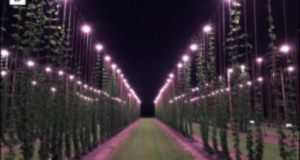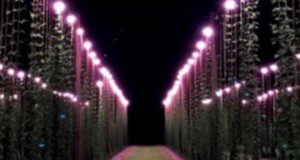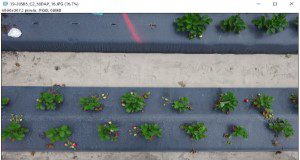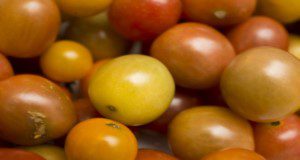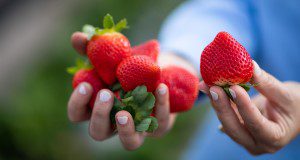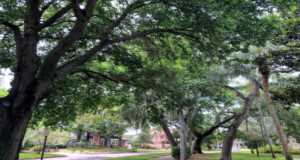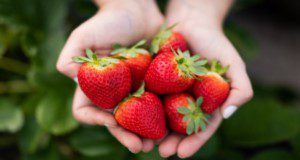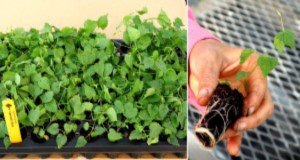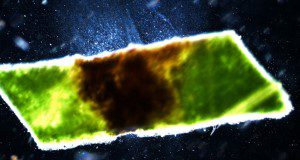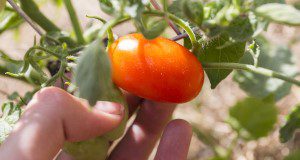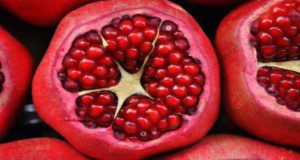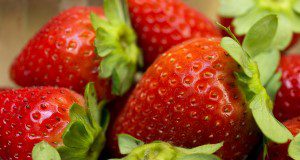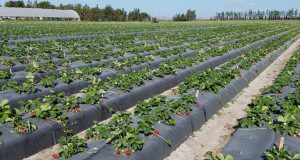The booming craft beer industry, rising prices of hops, and demand for locally-produced ingredients have recently increased interest in local hop production among growers and brewers. This article describes crop management practices and labor inputs required for small-scale hop production in Florida, with the aim of assisting growers with investment and farm management decisions. It is part of a larger series that will review the challenges of hop production in Florida, based on research experience at the UF/IFAS Gulf Coast Research and Education Center in Balm, FL. This new 6-page publication of the UF/IFAS Horticultural Sciences Department was written by Shinsuke Agehara, Mariel Gallardo, Aleyda Acosta-Rangel, Zhanao Deng, Jack Rechcigl, Tianyuan Luo, and Qi Qiu.
https://edis.ifas.ufl.edu/hs1409
Tag: UF/IFAS Gulf Coast Research and Education Center
Construcción del Sistema de Tutorado para Lúpulo y su Establecimiento en Florida
El lúpulo (Humulus lupulus L.) es un ingrediente esencial en la elaboración de cerveza, que agrega amargura y sabor a la cerveza. Impulsada por el reciente movimiento de la cerveza artesanal, la producción de lúpulo se está expandiendo hacia estados no tradicionales en la producción de lúpulo. En Florida, aunque la producción comercial de lúpulo es casi inexistente, la cantidad de cervecerías artesanales aumentó de 45 en 2011 a 285 en 2018, y el impacto económico de la industria de la cerveza artesanal en Florida supera los $3 mil millones. Este nuevo artículo de 7 páginas, escrito por Shinsuke Agehara, Aleyda Acosta-Rangel, Zhanao Deng, Jack Rechcigl y Simon Bollin, traducido por Mariel Gallardo y publicado por el Horticultural Sciences Department de UF/IFAS, proporciona pautas y consideraciones para construir el sistema de tutorado para lúpulo y su establecimiento en Florida, utilizando como modelo, el campo de investigación del UF/IFAS Gulf Coast Research and Education Center (GCREC).
https://edis.ifas.ufl.edu/hs1408
Private Wells 101: Bacterial Contamination and Shock Chlorination
Private well users are responsible for the management and protection of their wells. This new 4-page EDIS publication is for Florida homeowners who are interested in learning more about their well-water system and understanding how to properly shock, or disinfect, the well if there is evidence of drinking water contamination. Written by Yilin Zhuang and Mary Lusk, and published by the UF/IFAS Department of Soil and Water Sciences.
https://edis.ifas.ufl.edu/ss700
Useful Image-Based Techniques for Manual and Automatic Counting Using ImageJ for Horticultural Research
Counts (e.g., number of leaves, fruits, seeds, or plants) are a common type of data gathered in horticultural research. In many instances, using ImageJ can increase the ease and accuracy of gathering count data. When image processing can easily separate objects of interest from the background, automatic counting with ImageJ can eliminate tedious manual counting processes. Furthermore, additional plant growth data, such as leaf area, plant width, and canopy area, can be collected from the same image. The image processing and analysis techniques introduced in this article are easily accessible and simple to use and thus can be adopted not only by researchers, but also by Extension agents and students. This new 10-page publication of the UF/IFAS Horticultural Sciences Department is part of a series introducing various image-based measurements with ImageJ for horticultural research. Written by Lillian Pride and Shinsuke Agehara.
https://edis.ifas.ufl.edu/hs1405
Herbicide Resistance Management in Florida Tomato Production
Herbicide resistance was historically not a significant issue in most horticultural crops because few herbicides were applied. Close proximity of agronomic crops and the loss of methyl bromide has led to a gradual increase in herbicide inputs and the increased occurrence of herbicide-resistant weeds in tomato fields. Very few herbicides are registered for tomato, and resistance is a major concern. This new 11-page publication of the UF/IFAS Horticultural Sciences Department provides a definition of herbicide resistance, explains how it develops, and provides management recommendations for tomato growers. It was written for growers and Extension agents, but the information may be of interest to anyone concerned about herbicide resistance in vegetable and small fruit crops. Written by Shaun M. Sharpe, Nathan S. Boyd, Ramdas G. Kanissery, and Peter J. Dittmar.
https://edis.ifas.ufl.edu/hs1398
Leaf Spot Diseases of Strawberry
Several different fungi and one bacterium cause leaf spot diseases of Florida strawberry. Symptoms caused by these pathogens are often similar, leading to confusion and misdiagnosis of the disease. To facilitate diagnosis, the most common leaf spots diseases of strawberry in Florida are described in this new 6-page article, written by Juliana S. Baggio, James C. Mertely, and Natalia A. Peres, and published by the UF/IFAS Plant Pathology Department.
https://edis.ifas.ufl.edu/pp359
A Simple, Inexpensive, and Portable Image-Based Technique for Nondestructive Leaf Area Measurements
This new 6-page article, part of a series introducing various image-based measurements for horticultural research, introduces a simple, inexpensive, and portable image-based technique for nondestructive leaf area measurements. It uses an imaging apparatus made with ordinary office supplies to obtain leaf images in greenhouse or field environments. Leaf images are then processed and analyzed to measure leaf area using ImageJ, an open-source image processing program. Because both image capture and analysis are performed nondestructively, leaf area can be measured on the same leaf repeatedly, enabling the monitoring of leaf growth over time, as well as photosynthesis and transpiration. This technique is particularly useful to researchers and students studying leaf growth and physiology in greenhouse or field environments. Written by Shinsuke Agehara, Lillian Pride, Mariel Gallardo, and Jose Hernandez-Monterroza, and published by the UF/IFAS Horticultural Sciences Department.
https://edis.ifas.ufl.edu/hs1395
Florida’s Urban Forest: A Valuation of Benefits
This new 13-page article combines canopy coverage data from all of Florida’s metropolitan and micropolitan areas with ecological models developed by the USDA Forest Service to calculate several key benefits of urban trees and an approximation of their monetary value. Benefits of urban trees include carbon sequestration/storage, air pollution filtration, and stormwater mitigation. Written by Drew C. McLean, Andrew K. Koeser, Deborah R. Hilbert, Shawn Landry, Amr Abd-Elrahman, Katie Britt, Mary Lusk, Michael G. Andreu, and Robert J. Northrop, and published by the UF/IFAS Environmental Horticulture Department.
https://edis.ifas.ufl.edu/ep595
How Much Space Does My Shade Tree Need? Planting Space Recommendations for Medium and Large Trees in Florida Cities
Trees provide urban landscapes with shade, beauty, and habitat. They can also help lessen the effects of flooding and urban heat buildup while storing carbon dioxide, a major greenhouse gas. When planted in the wrong place, however, trees can damage urban infrastructure. To maximize the benefits provided by urban trees, we need better-informed tree selection and larger planting spaces with the capacity to support big-canopy trees. This new 8-page fact sheet is intended to help arborists, urban foresters, landscape designers, landscapers, and anyone else responsible for the planting of trees in developed areas make informed decisions regarding the planting width requirements of the trees they select. Written by Deborah R. Hilbert, Andrew K. Koeser, Brooke L. Moffis, JuWanda G. Rowell, and Drew C. McLean, and published by the UF/IFAS Environmental Horticulture Department.
https://edis.ifas.ufl.edu/ep592
Pestalotia Leaf Spot and Fruit Rot of Strawberry
Pestalotiopsis-like fungi cause diseases on many different species of plants worldwide, including strawberry. The pathogen is not necessarily new to strawberry and was first reported causing fruit rot in Florida and Israel in the 1970s. However, during the 2018–19 and 2019–20 strawberry seasons, severe and unprecedented outbreaks were reported in Florida, characterized by symptoms on nearly all plant parts including roots, crowns, petioles, fruit, and leaves. This new 4-page publication of the UF/IFAS Plant Pathology Department describes the disease and its causal agent and briefly covers what is known about disease development and control practices. This document will provide valuable information to strawberry nursery and fruit production growers. Written by Juliana S. Baggio and Natalia A. Peres.
https://edis.ifas.ufl.edu/pp357
How to Measure Leaf Disease Damage Using Image Analysis in ImageJ
This new 13-page article introduces simple image processing and analysis techniques to quantify leaf disease damage using ImageJ, an open-source image processing program. These techniques are not meant to replace crop scouting or disease diagnosis by a plant diagnostic laboratory, but rather to provide a supplemental tool for making quantitative measurements of leaf disease damage. Similar techniques are also available for plant growth assessment, including plant height, plant width, and canopy cover area. The image processing and analysis techniques introduced in this article are fairly simple to use and thus can be adopted not only by researchers, but also by producers, crop consultants, Extension agents, and students. Written by Lillian Pride, Gary Vallad, and Shinsuke Agehara, and published by the UF/IFAS Horticultural Sciences Department.
https://edis.ifas.ufl.edu/hs1382
Selection and Preparation of Planting Material for Successful Hop Production in Florida
Hops (Humulus lupulus L.), an essential ingredient in beer, have potential to develop as a viable alternative crop in Florida. In our surveys, many breweries have expressed strong interest in using locally grown hops. However, hop production is plagued by many diseases, most of which were inadvertently introduced through the movement of contaminated planting material. The primary purposes of this new 7-page article are to prevent the introduction of these diseases into the state and to provide recommendations for selecting and preparing planting material for successful hop production in Florida. This publication of the UF/IFAS Horticultural Sciences Department is part of a larger series that will review the challenges of hop production, based on research experience at the UF/IFAS Gulf Coast Research and Education Center (UF/IFAS GCREC) in Balm, FL.
https://edis.ifas.ufl.edu/hs1381
Using Supplemental Lighting to Control Flowering of Hops in Florida
Hops (Humulus lupulus L.) are an emerging crop in Florida. Florida’s craft beer industry has experienced significant growth over the last 10 years, with 285 breweries producing 42.6 million gallons of beer and generating an economic impact of $3.6 billion in 2018. To respond to their strong demand for locally grown hops, an interdisciplinary hops research team is currently studying optimum crop management practices at the UF/IFAS Gulf Coast Research and Education Center (UF/IFAS GCREC). In Florida, the major yield-limiting factor is premature flowering induced by inadequate day length. This new 4-page article, written by Shinsuke Agehara and published by the UF/IFAS Horticultural Sciences Department, provides guidelines for supplemental lighting to control flowering of hops in Florida.
https://edis.ifas.ufl.edu/hs1365
Hop Yard Establishment and Trellis Construction in Florida
Hops (Humulus lupulus L.) are an essential ingredient in brewing, adding bitterness and flavor to beer. Driven by the recent craft beer movement, hop production is expanding into nontraditional hop-producing states. In Florida, while commercial hop production is almost nonexistent, the number of craft breweries in Florida increased from 45 in 2011 to 285 in 2018, and the economic impact of Florida’s craft beer industry exceeds $3 billion. This new 7-page article, written by Shinsuke Agehara, Aleyda Acosta-Rangel, Zhanao Deng, Jack Rechcigl, and Simon Bollin and published by the UF/IFAS Horticultural Sciences Department, provides guidelines and considerations for building a hop yard in Florida, using the UF/IFAS Gulf Coast Research and Education Center’s research hop yard as a model.
https://edis.ifas.ufl.edu/hs1354
Choosing the Right Blackberry Cultivar in Subtropical Florida
Blackberry (Rubus spp.) is a deciduous berry crop and the fourth most economically important berry crop in the United States. Driven by the growing demand for blackberries, production recently expanded to the southeastern United States. In Florida, however, commercial blackberry production is limited primarily to small commercial U-pick operations. The main challenges include insufficient chill hours and poor fruit quality associated with the subtropical climate. This new 6-page article, a publication of the UF/IFAS Horticultural Sciences Department, will discuss important cultivar selection criteria and recommended blackberry cultivars in subtropical Florida. Written by Shinsuke Agehara, Syuan-You Lin, and Zhanao Deng.
https://edis.ifas.ufl.edu/hs1352
Integrated Management of Bacterial Spot on Tomato in Florida
Bacterial spot is one of the most detrimental diseases of tomato and is especially severe in the southeast United States when weather conditions (high temperature, high humidity, and rain) become conducive for disease development. This new 8-page publication of the UF/IFAS Plant Pathology Department presents updated information about the causal pathogen and management of bacterial spot on tomato in Florida. Written by Amanda Strayer-Scherer, Ying-Yu Liao, Peter Abrahamian, Sujan Timilsina, Mathews Paret, Tim Momol, Jeff Jones, and Gary Vallad.
https://edis.ifas.ufl.edu/pp353
Target Spot of Tomato in Florida
Fresh-market tomatoes bring in $400-$500 million annually as the third most valuable crop in the state. Defoliation and fruit damage from target spot, caused by Corynespora cassiicola, can have serious economic implications for growers. This new 5-page publication of the UF/IFAS Plant Pathology Department, written by Keevan MacKenzie, Jessica Chitwood, Gary Vallad, and Sam Hutton, reviews symptoms and epidemiology of the disease and provides current management recommendations.
https://edis.ifas.ufl.edu/pp351
Guidelines for Pomegranate Nutrient Management in Florida
Many Florida growers are interested in the potential of pomegranate as an alternative fruit crop. The first flush of flowers produces the best quality fruit, and climatic conditions have a great impact on the timing of flowering. Proper fertilization is critical to promote healthy canopy development, minimize nutrient disorders, and maximize fruit yield and quality. This new 5-page article, written by Shinsuke Agehara, Weining Wang, and Ali Sarkhosh and published by the UF/IFAS Horticultural Sciences Department, provides guidelines for pomegranate nutrient management in Florida.
https://edis.ifas.ufl.edu/hs1347
Phytophthora Crown Rot of Strawberry
This new 3-page article describes Phytophthora crown rot, an important disease in Florida strawberry fields caused mainly by Phytophthora cactorum, and provides some recommendations for cultural and chemical control. Written by Natalia A. Peres and Juliana S. Baggio and published by the UF/IFAS Plant Pathology Department.
https://edis.ifas.ufl.edu/pp350
The UF/IFAS Strawberry Clean Plant Program
Florida strawberry growers primarily utilize cultivars developed by the UF/IFAS Strawberry Breeding Program. These cultivars are bred to provide the yield and quality traits needed by the Florida industry. Yet if a new cultivar has the traits that Florida growers need but pathogen-tested planting stock is not available to growers, the cultivar’s impact will be limited. The Clean Plant Program generates the pathogen-tested planting stock that nurseries and growers require. This new 5-page publication of the UF/IFAS Horticultural Sciences Department, written by Catalina Moyer, Natalia A. Peres, and Vance M. Whitaker, is intended to educate both the industry and the public on the importance of the Clean Plant Program and the methods used to produce planting stock of new cultivars.
https://edis.ifas.ufl.edu/hs1343
